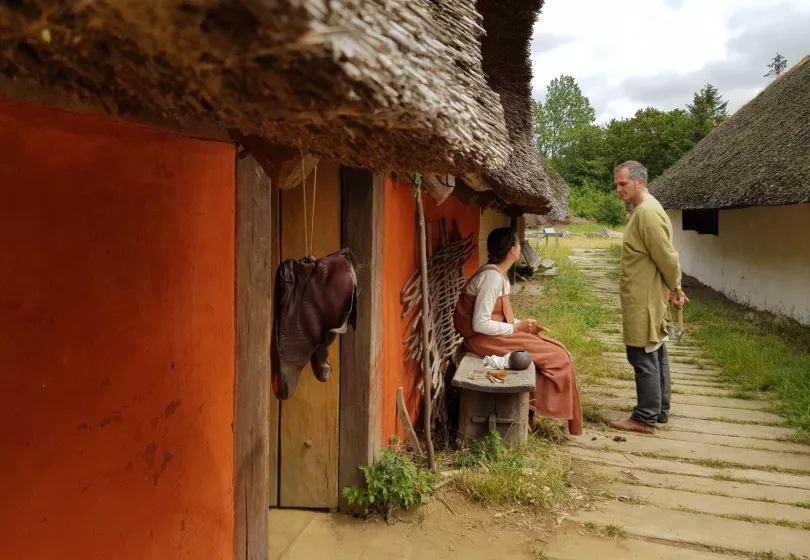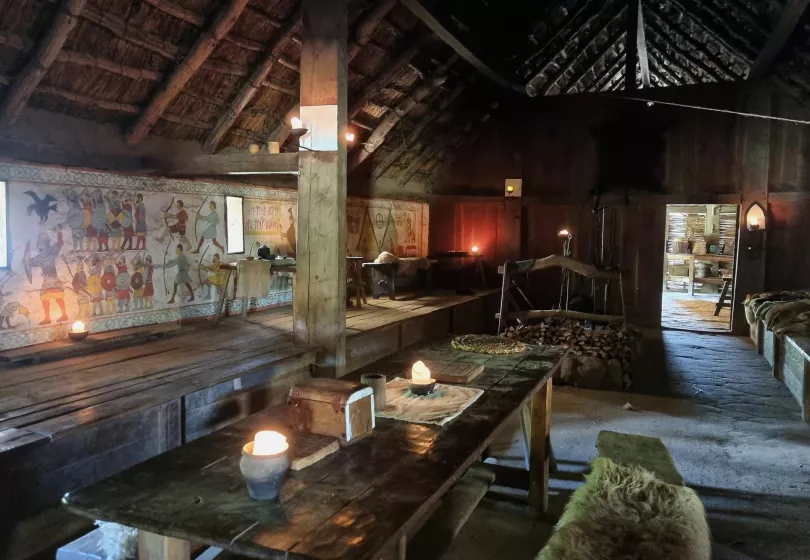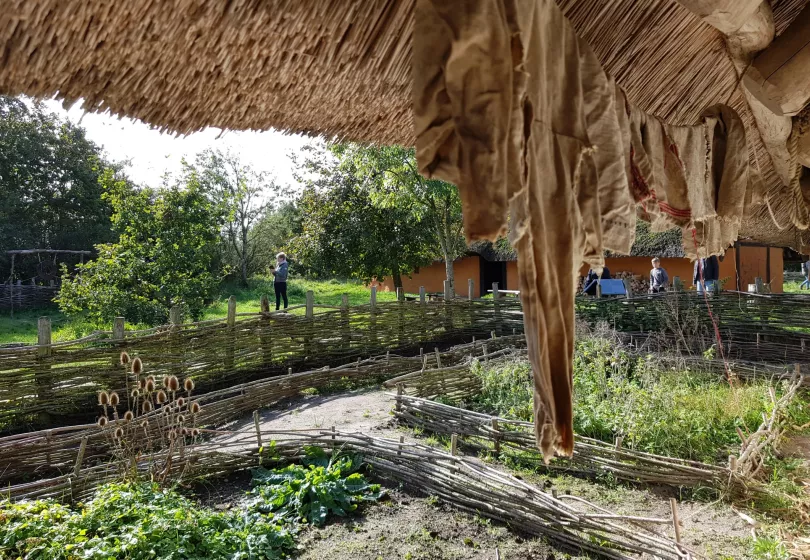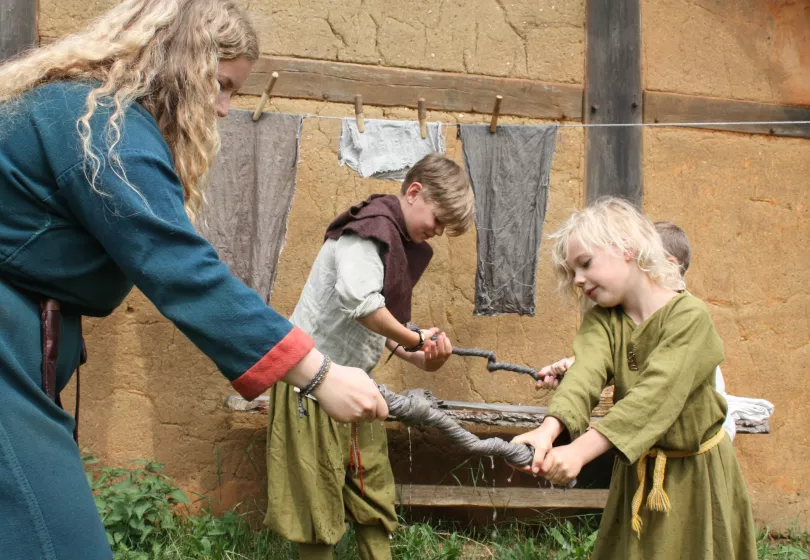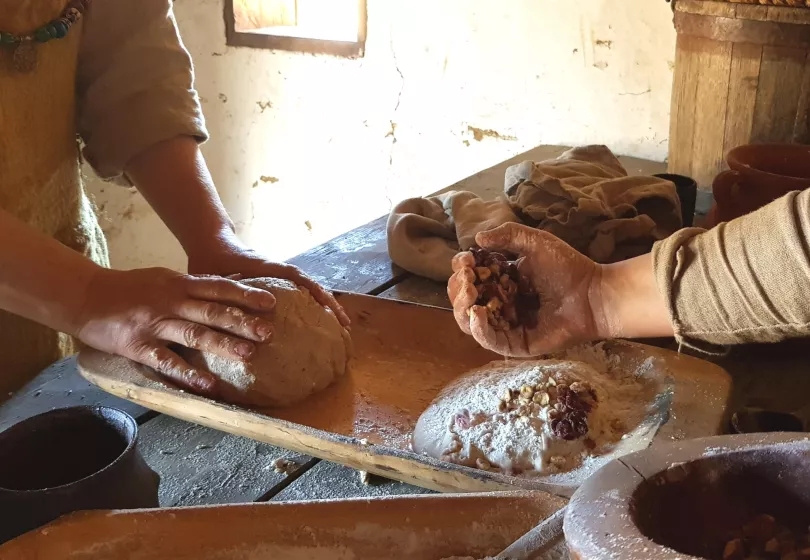The Inn
When in the early Viking Age you would arrive in Ribe from the south east, you would pass a 17 m long and 5.25 m wide wattle and daub building like this one. The house stood near the river bank. A road led along a fence and down to a ford. What the house was used for is unclear, but we have chosen to name it the Inn. A place for travelling traders to drop in, have a rest and a bite to eat, before continuing towards the marketplace. Traces of this house were excavated east of the station in Ribe.
The Thing-hall
In the same area and from the same period of time another find was made. A 30 m long house with slightly curved wattle and daub walls and a thatched roof, It resembles the main buildings on the farms in the vicinity. The size of the house implies it must have belonged to an influential man. Perhaps it was the residence of the person in charge of the nearby marketplace. The house has a sleeping area, en entrance hall, a main hall as well as a kitchen area consisting of two rooms. This may indicate a rather large household. In Ribe VikingeCenter we have named the building the Thing-hall even if we know of no sources of Viking Age thing-halls as it is the case with thingsteads.
Thing assemblies
In the Viking Age and in the Middle Ages, the Thing (oldnordisk: þing) was the governing assembly of free people of the community. The thing assemblies can be described as an early attempt to introduce democracy, ensuring that disputes were not to be settled by blood feud and violence alone. The system was transported from the Scandinavian homelands to Viking colonies throughout Northern Europe. Today, we can identify many of these settlements by their place names beginning with thing, tin, fing or fing. They are evidence of our shared Norse heritage.
The Cobbler's House
The Cobbler’s House has been reconstructed according to finds made east of the station in Ribe. The archaeologists found a group of houses standing very close together with traces of different crafts. Perhaps this house belonged to a cobbler who produced the different types of shoes that have been found during excavations in Ribe. Large quantities of leather pieces left over from shoemaking have been found, and from the cut-off scraps and the relatively poor use of materials, we can tell that skins were in good supply.
The Carpenter's workshop
Only a narrow alley separates this house and the neighbouring Cobbler's House. The excavation revealed traces of craft activities, and apart from a door at the gable end, this house also had a double door on the side. In Ribe VikingeCenter the house is the Carpenter's Workshop where also our visitors can try their hand at whittling using the carpenter's shaving horse and drawing knife.
The Ribe House
This particular house design with the sloping external buttresses two by two, has not been found elsewhere in Denmark. It is constructed of wattle and daub walls built inside of the external load bearing posts. No traces were found of the roof construction, and that is why Ribe VikingeCenter has built this house and the two neighbouring houses of the same type, but with different roofs. We call it the Ribe House due to the unique construction. We do not know who may have lived in this house, but it did have a small workshop, so perhaps it belonged to a craftsman or a trader.
The remains of this house were found in the street called Tvedgade in Ribe, which is very close to the Viking Age marketplace. As mentioned, we have built another two houses of this construction. They are housing modern facilities.

